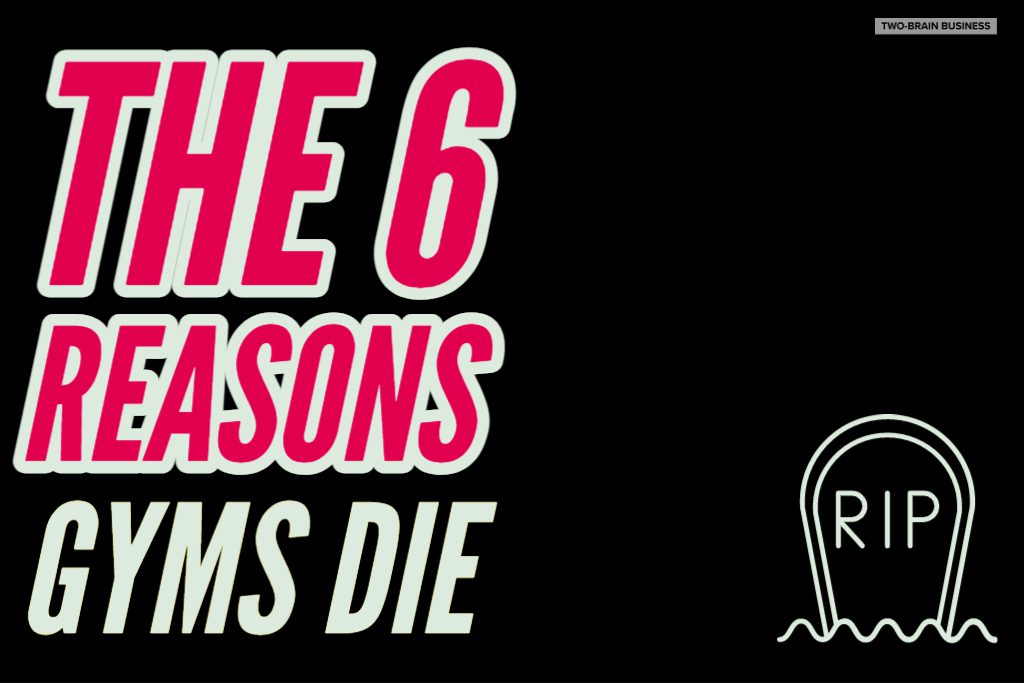Gyms go out of business all the time.
When a gym goes under, the reasons can seem complex. Microgym owners especially hate to admit failure. You might not even know a gym is closed until you see its founder’s ads for real estate on LinkedIn.
Unfortunately, that leaves the rest of us without the valuable lessons we could be learning from the yoga studios, CrossFit affiliates, personal training practices and nutrition businesses that close their doors forever.
Gyms fail for six reasons:
1. Low Net Owner Benefit (NOB)
The gym owner just isn’t making enough money. This can happen with 10 clients or 100 clients or 300 clients. If the owner is starving and constantly justifying her hard work to her family at home, it’s not going to last long.
2. Too Few Clients
You know this one. This isn’t the most important reason gyms fail, but it’s definitely in the mix. Even if your system is revolutionary and your location is perfect and your staff is incredible, everyone starves without clients.
3. Too Little Revenue per Member (ARM)
If the gym has 1,000 clients and they’re only paying $10 per month, it will go out of business. This is really common in both CrossFit and yoga, where the owners deliver high-value service for prices that are unsustainable.
4. Poor Length of Engagement (LEG)
The gym is constantly onboarding and losing clients, making cash flow unpredictable. High churn means more marketing, which means less time spent on retention, which means more churn. It’s a downward spiral.
5. High Expenses (ROI)
The gym owner bites off more than they can chew. They take a big space, make big bets on equipment or hire full-time staff with titles like “head trainer” without thinking about how these spends will create a good return.
6. A Low Effective Hourly Rate (EHR)
The owner is working hard but the gym isn’t growing. Eventually, the owner just burns out, fights until the end of their lease term and gives up. Because most gym owners are capable of very hard work, this is actually one of the biggest killers out there.
The Blame Game
Of course, we all love to blame other things or people for our failures.
Statements like this are common: “My market is oversaturated!” or “That gym down the street gave my method a bad name!” But these are red herrings:
- The method you choose to deliver fitness (yoga, CrossFit, heart-rate training, etc.) won’t make you or break you. Being first to market is sometimes an advantage but also sometimes a high risk. Some gyms benefit from having “Bikram” or “CrossFit” over their doors; some don’t.
- Other gyms can’t “steal” your clients. If your clients jump on the next bus that passes by, it’s because they were already standing on the curb waiting for it.
- Governments, health orders and pandemics don’t kill gyms that aren’t already fragile. COVID lockdowns sped up the process in many cases, but, just as with humans, the gyms most affected by COVID were the ones with “pre-existing comorbidities.”
This post is a bit of tough love. Telling you this stuff actually makes me uncomfortable because I know some readers will get defensive.
But it’s important that you think about your business objectively. If you’re weak in one of these six areas, you’re vulnerable—no matter how great you are at coaching CrossFit.
In the next post in this series, I’ll tell you how Two-Brain grows gyms by first making them resilient to these six threats and then turning each of the six to the gym’s advantage.

